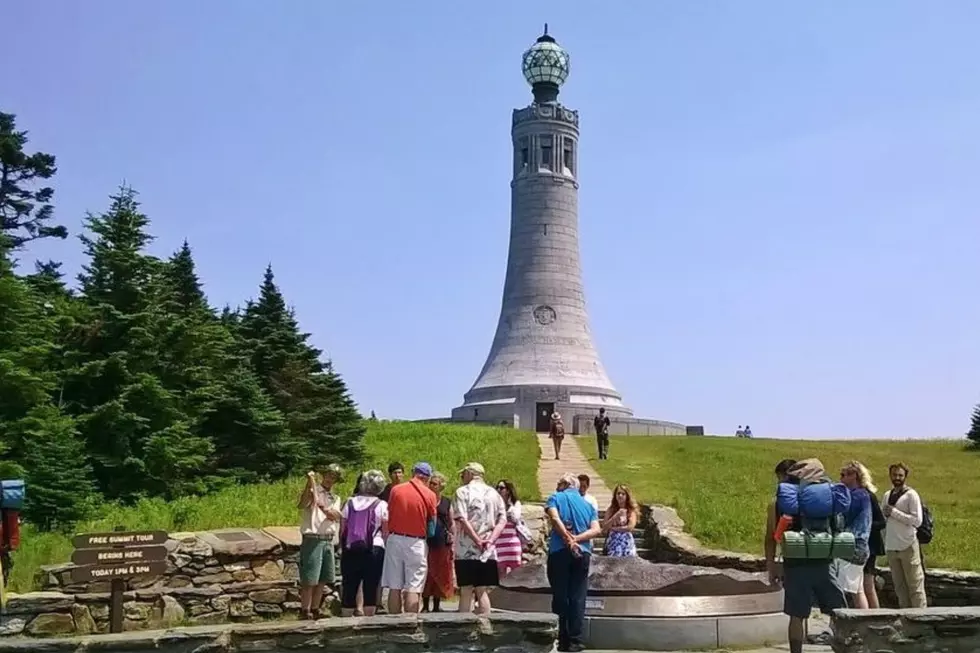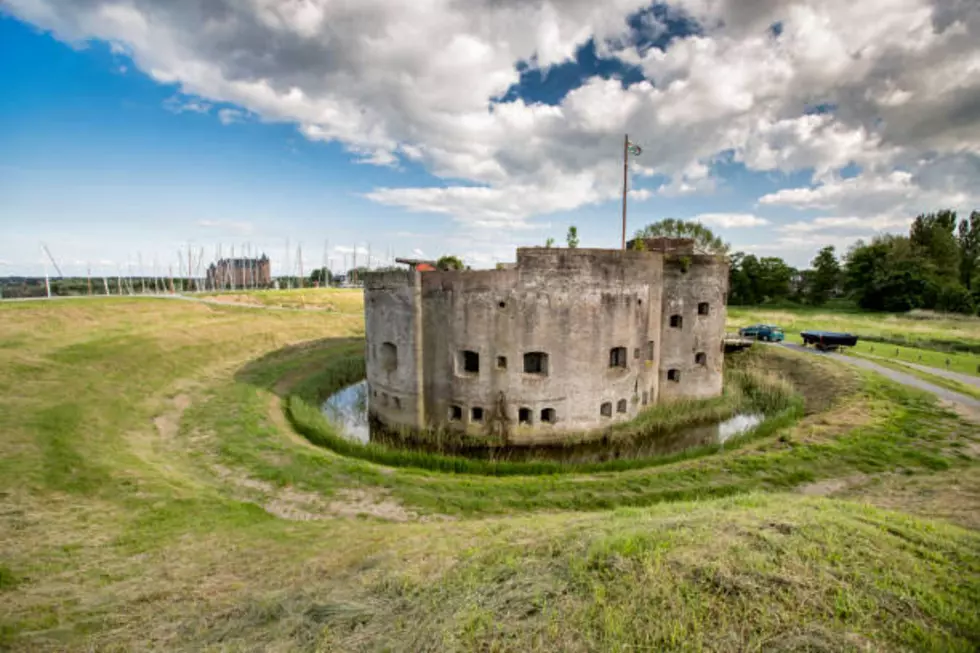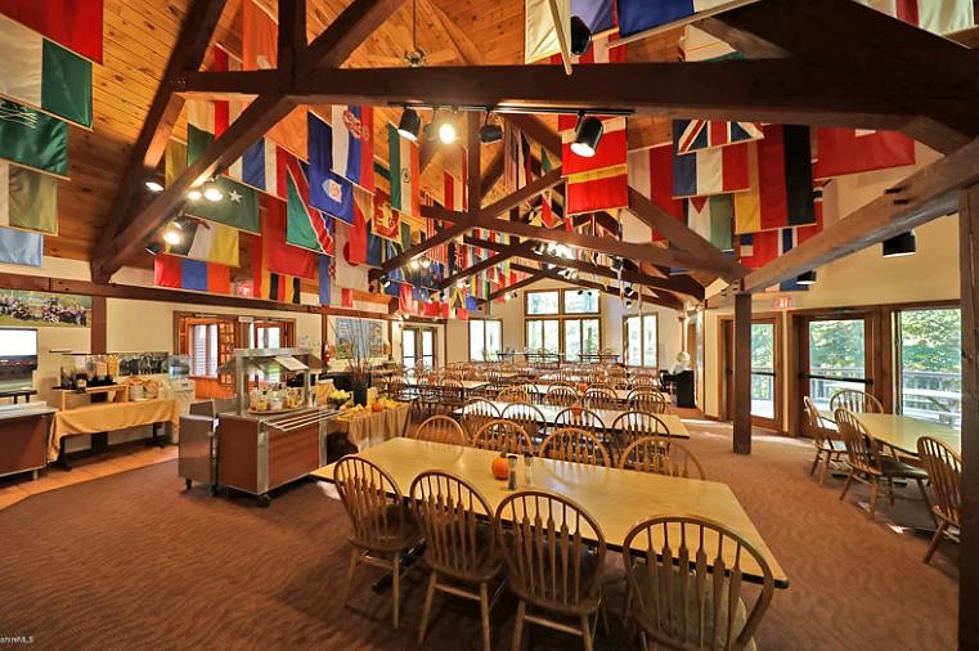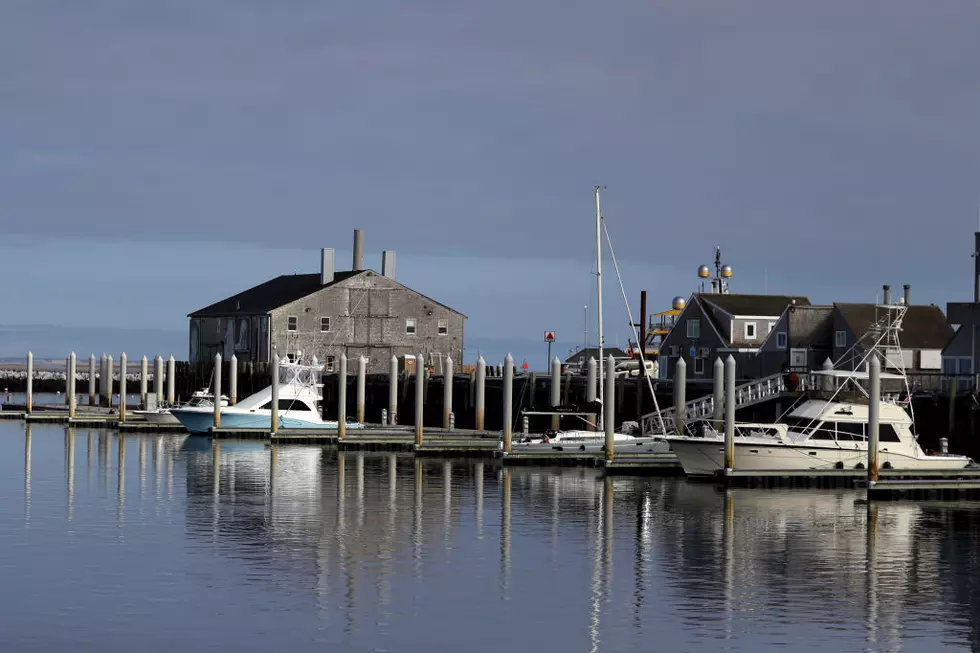
Hey Berkshires, Do You Remember These Epic Blizzards & Snowstorms?
We did not get a blizzard out of the latest snowfall, but in the past, that has not always been the case.
So, we thought we would look back at some of the worst snowstorms that we have been a part of in the past.
Check out this list of storms and tell us what you might remember about them. Kicking this off the list was the one that happened on Thanksgiving 1971.
Thanksgiving Snowstorm of November 24-25, 1971
Heavy snow came down to 22.5 inches with amounts up to 30" reported elsewhere. This storm turned the busiest travel day of the year into a nightmare, with many stranded travelers not making it to their destinations on Thanksgiving. This storm was the greatest November snowstorm on record and one of the greatest ever
Nothing like a Flash Freeze and Brief Blizzard back on February 2, 1976
Temperatures fell from 41°F at midnight, to 1°F at 10:30 AM, with a 30-degree drop in the few hours before sunrise. Rain changed to snow and winds increased to 50 MPH with gusts to 67 MPH. Officially, visibility was near zero during the morning commute. Roads were very icy and travel was seriously hampered.
April 6-7 1982
Shutting down highways, offices, and schools this weather event is considered the worst April snowstorm in local history. The April snowstorm was accompanied by heavy snowfall, high winds, blizzard conditions, and most notably; extensive thunderstorm activity. Most areas saw one to two feet of snow The winter of 1981-82 is one the snowiest on record. Gusts of 70 to 80 MPH were observed in Massachusetts and Connecticut.
Unprecedented Early Season Snowstorm October 4, 1987 Folks around here say that this is one of the worst biggest snowstorms ever in the Berkshires.
22 News Youtube
Three inches up to about 2 feet of extremely wet snow fell across eastern New York and western New England resulting in many deaths and injuries and an enormous amount of property damage. The storm wreaked havoc on the area causing widespread power outages. The trees still had their leaves which was a major contributing factor to the number of trees and limbs that came down taking out power lines. Numerous branches and trees were felled taking down power lines with them, blocking roads and damaging houses. Hundreds of thousands of people were without power; some for up to two weeks. It was the most snow that ever fell during the month of October.
The Downslope Nor'easter December 10-12, 1992
This storm produced incredible snowfall totals across many mountainous locations, Strong east winds caused the air to "downslope" off the Berkshires and Taconics, and "dry it out." Snowfall totals in the Berkshires ranged from 30 to 48 inches with drifts up to 12 feet. Schools were closed for a week and the national guard had to bring in heavy equipment to remove the snow.
Superstorm of 1993 March 13-14, 1993
It was called a superstorm because it affected the entire eastern third of the U.S. There was a major severe weather event in the southeast, flooding, and snow in the Mid-Atlantic states, and blizzard conditions in the northeast. This deemed the 2nd greatest March snowstorm record and the 2nd greatest snowstorm on record, while other areas received as much as 40 inches,
Doubled-Barrel Nor'easters December 25-26, 2002 & January 3-4, 2003
Unprecedented back-to-back snowstorms buried parts of the Northeast during the Christmas and New Year 2002-2003 holiday season. Both storms produced over 20 inches of snow. The first storm on Christmas Day was the biggest snowstorm since the “Superstorm” of 1993. 6-16 inches in western New England and considerable blowing and drifting. The second storm produced 20.8 inches of snow. It was the first time since 1887-88 that two storms of more than 20 inches were recorded. The second storm combined with ice left on trees from an ice storm that occurred January 1-2 to bring down numerous trees and bring many power outages.
President Day Storm - February 2003
This was the third major snowstorm of the season that affected much of eastern New York and adjacent western New England on President's Day. Although the heaviest snow from the storm fell from the mid-Atlantic Region to New York City and southern New England, plenty of snow fell in Albany's forecast area. The heaviest totals were south and east of Capital District with up 2 feet in the Berkshires.
April 3-5, 2003 - Snow and Sleet Storm
The storm mainly impacted areas north of a line from Schoharie County, NY east to northern Berkshire County, MA. 12-18” of snow fell across the southern Adirondacks, Lake George, and Glens Falls areas east to northern Bennington and Windham Counties in Vermont. South of that, a mixture of snow, sleet, and freezing rain fell. Ice accumulations of ½” to 1” were reported on the third and fourth. All areas saw precipitation change to and end as snow on the fifth. The weight of ice and snow caused many downed trees and limbs and power outages. The storm was followed by gusty winds and below-freezing temperatures through April 6 which resulted in additional power outages. Power was not fully restored to all areas until Tuesday evening, April 8.
January 14-15, 2007: Ice Storm
An arctic boundary moved southward across the region Saturday and stalled over the mid-Atlantic region Saturday night. With the passage of the boundary, cold air was drawn in at and near the surface on northerly winds. Waves of low pressure moved eastward along the boundary over the long weekend resulting in an ice storm. A weak low passed to our south on Sunday resulting in periods of light freezing rain. However, the primary/deeper low moved from the Ohio Valley eastward across the local area Monday bringing heavier precipitation. The precipitation did start out as a period of sleet late Sunday night into early Monday morning with snow across the southern Adirondacks, however, everything eventually changed to freezing rain. Significant ice accumulations occurred with over 100,000 utility customers losing power. Saratoga County was hit particularly hard with up to an inch of ice and accounting for about half the power outages. Ice accumulations from Albany County: pole & berries. To make matters worse, winds increased Monday evening placing additional strain on the already burden trees and power lines leading to additional power outages even after the freezing rain ended.
Valentine's Day Storm: February 14, 2007
Low pressure formed over the deep south early on Monday, February 12th. This system headed eastward into the southeastern United States on Tuesday, February 13th and redeveloped along the mid-Atlantic coast by Wednesday morning, Valentine's Day. The low rapidly intensified as it passed just south of Long Island during the day of Valentine's Day. The local area was pummeled with 1 to over 3 feet of snowfall (map). Intense mesoscale snow bands developed resulting in snowfall rates of 2 to 4 inches in an hour with localized amounts of 6 inches an hour occurring. Blowing and drifting occurred in the Capital District making some roads impassable. Some motorists abandoned cars on the road. Warmer air moved in aloft at 6000 to 8000 feet resulting in sleet mixing in with the snow at Albany and to the south. Six inches or more of sleet was reported in northwest Connecticut and the southern Berkshires of Massachusetts. Once the storm moved to our east Wednesday afternoon cold air was rapidly drawn back into the area. This storm is one of the greatest snowstorms for February for Albany. NESIS: Category 3 - Major.
December 11-12, 2008: Ice & Snow Storm
The precipitation came down heavy at times Thursday night, December 11th. Hourly precipitation rates of the quarter to a third of an inch were reported for several hours in the form of freezing rain across much of the forecast area. Thunder was even reported. By the time the precipitation tapered off Friday morning, December 12th, ice accumulations ranged from around half of an inch up to an inch across portions of the Capital District and the Berkshires. North and west of the Capital District temperatures were colder and frozen precipitation fell. Snowfall reports ranged from 2 to 4 inches just north and west of the Capital District, where sleet mixed in along with lesser ice accumulations, up to 8 to 12 inches across portions of the southern Adirondacks. (Rain/Snow/Ice Reports) There was widespread tree and power line damage across the local area. An estimated 350,000 utility customers lost power across East Central New York and adjacent western New England. Over 60,000 customers were still out of power Monday morning, December 15th and over 10,000 customers were still out of power Wednesday morning, December 17th.
February 23-24 Heavy Snow (Part I) and 25-27 Heavy Snow & Heavy Rains (Part II) 2010
Part I: Generally, 1 to 2 feet of snow accumulated across much of east-central New York and western New England with the highest amounts above 1500 feet. The heavy wet snow resulted in treacherous travel conditions, widespread power outages and even some building collapses. The power outages impacted six of Central Hudson Gas and Electric's major transmission lines. Numerous trains were delayed and or canceled on Amtrak between Albany-Rensselaer and Poughkeepsie due to power outages.
Part II: A powerful storm, the second in just a couple of days brought heavy rainfall and heavy wet snow to the area. The heavy wet snow resulted in additional and continued widespread power outages, downed trees and power lines, treacherous travel, road closures, train delays, building collapses and snow emergencies.
December 26-27, 2010: Nor'Easter
A major nor'easter brought significant snows and blizzard conditions to much of the northeastern United States Sunday, December 26th into Monday, December 27th. Bands of heavy snow with snowfall rates of 1 to 3 inches an hour occurred across the region. Snowfall totals of 1 to 2 feet occurred mainly east of the Hudson River and across adjacent western New England. Explosive deepening (cyclogenesis) occurred Sunday night as the low moved northward toward Long Island. Snowfall amounts dropped off dramatically to the northwest of the Capital District. Strong and gusty winds caused significant blowing and drifting of the snow. Winds gusts across the local area were 35 to 45 mph with gusts of 50 to 70 mph reported across southeastern New York, Connecticut and eastern Massachusetts. NESIS: Category 3 - Major
Early Season Nor'Easter: October 29-30, 2011
An early-season Nor'easter dumped heavy wet snow on across the area mainly to the south and east of the Capital District with snowfall amounts dropping off rapidly to the north and west. Snowfall rates were as high as 2 to 4 inches an hour in mesoscale snow bands. Power outages occurred as trees and wires came down due to the heavy snow. The outages were the most widespread and prolonged in areas where leaves were still on the trees. Snowfall in Berkshires from a foot to over 2 feet across the higher terrain of the northern Berkshires and across southern Vermont snowfall amounts ranged from 10 to 16 inches across Windham County and from 5 to 14 inches across Bennington County.
March 14, 2017: Nor'easter / Pi Day Blizzard
New England Gardening Youtube
A very significant coastal snowstorm impacted the region on March 14th featuring extremely heavy snowfall and blizzard conditions. This snowstorm was regarded as the largest snowstorm to impact the area since Valentine's Day 2007 Snowstorm/Blizzard. Snowfall reports ranged mainly from 1 to 3 feet, with some portions of the area picking up an amazing 36 to 42 inches of snowfall. The snow fell at 1 to 4 inches per hour for much of the day. A particularly heavy band of snow rotated northward across the region during the late morning into the early afternoon and stalled out over portions of the Mohawk Valley. This one was a doozy!
There was a widespread extreme public impact, with many roads severely impacted and schools closed for two days. Travel restrictions were issued for the Massachusetts Turnpike. Much of the train service across the region was canceled, In addition to the snowfall, gusty winds up to 40 to 50 mph resulted in near-zero visibility and blizzard conditions across the Mid-Hudson Valley, Catskills, Capital District, Taconics, Lake George-Saratoga Region, Berkshires, Litchfield Hills and much of southern Vermont. At higher elevations across the Berkshires, winds gusted as high as 74 mph. The winds brought considerable blowing and drifting of snow.
December 16-17, 2020
A significant coastal snowstorm impacted the region from December 16-17th. Heavy snow bands of 1- 2" per hour were common with this initial activity. The heavy snow bands slowed their northward progress and pivoted, resulting in incredible snowfall rates of up to 6" per hour after midnight on the 17th through the late morning. Snowfall amounts of 2-3 feet were common in these areas before the snow finally ended in the late morning/early afternoon of the 17th.

Read More: The Re-Opening Of The Berkshire Mall, Is It Dead In The Water?
Read More: More local Gems Closer To Our Home Here In The Berkshires!
Read More: Bringing Comfort And Warmth To The Berkshires With The PJ Library
More From WUPE









